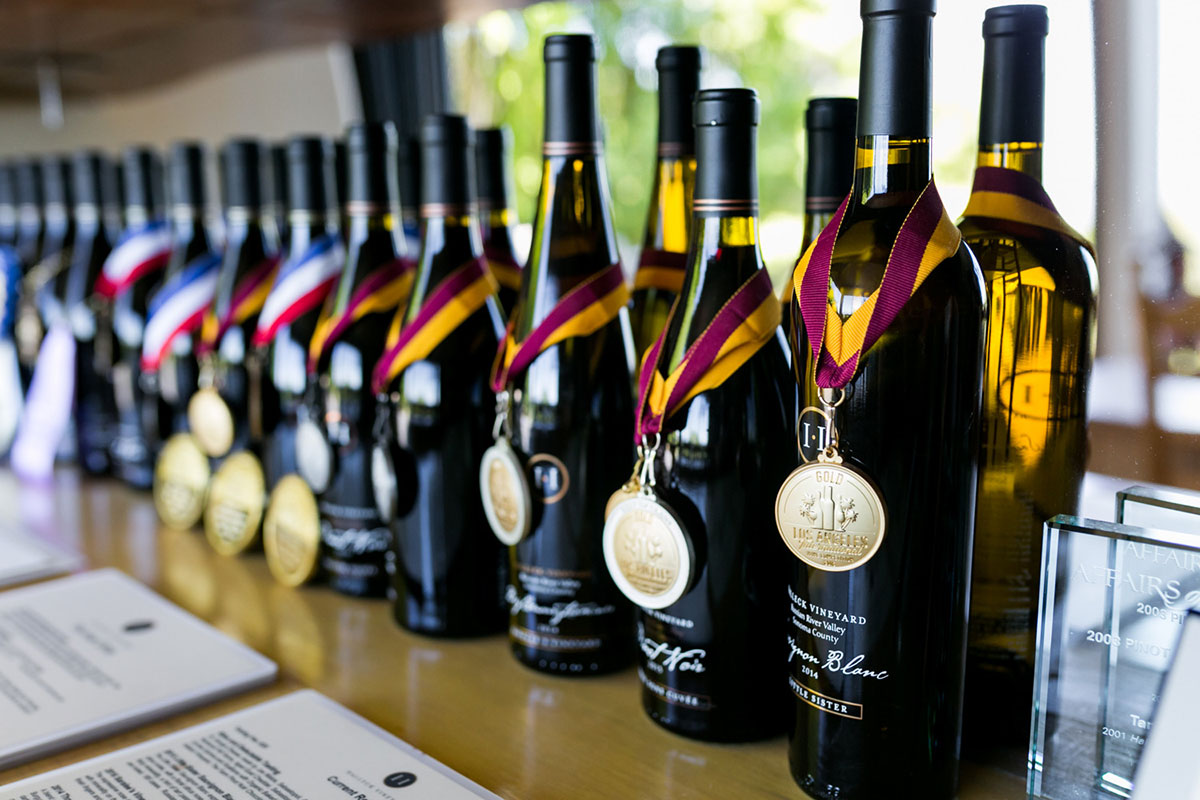A Beginner’s Guide to Tasting Wine from Halleck Vineyard
With wine bars closed, there's no time like the present to enjoy a special wine tasting at home. But how exactly do you get started? For those whose entire knowledge of wine consists of being able to distinguish red from white, we turned to Halleck Vineyard, who shared a beginner's guide on how to taste wine properly. Read on for their tips, or watch the video (below) of our special event with Ross Halleck and Stephanie Culen, Certified Sommelier, of Halleck Vineyard for more details about the vineyard.
(For a limited time, Related residents also receive a special offer on Halleck Vineyard wines through ABC Wine Company; check the Related Connect app for more details).
Tasting Wine
There are five main components to the art of tasting wine, referred to as the five S’s: see the wine, swirl it in your glass, smell its aroma and bouquet, slurp the wine to engage both the olfactory and taste senses, and then savor its delight. In embracing these steps while tasting wine, you may discover a new and different experience than simply drinking it. Let’s break out the components and reveal the importance of each one.
Step 1: See
When looking at a wine, the color will indicate the obvious: Is it a white, red or a pink wine? But the color of a wine also gives information about how the wine was processed. For example, if the wine is cloudy, it may be unfiltered or organic. If it is clear, the wine is filtered. Both options indicate a good wine – you just have to decide what you prefer. In addition, when looking at a wine in the glass, its opacity will give clues as to the grape varietal of the wine. Typically, thin-skinned grapes, like Pinot Noir, will be more translucent than a thicker-skinned grape like Cabernet Sauvignon which is more challenging to see through in a glass.
Step 2: Swirl
Once you’ve looked at the wine and have made a discerning observation, place the stem of the glass between your forefinger and middle finger gently cupping the base and rotating the glass to swirl the wine. This opens the molecules of the wine so that when you go to smell, it will offer you the best possible bouquet. Wine continues to change in the glass as it mingles with oxygen, and each moment the wine is in the glass will offer a new smell and taste. This is what it means to say a wine is “opening up."
Step 3: Smell
It is then time to smell the wine before we taste. We have been taught that the tongue tastes five things: sweet, salty, sour, bitter, and Umami, a Japanese term that translates to savory. If this is all we taste with our tongues, it goes to reason that the more varied experience of flavor take place somewhere else. This happens in our olfactory receptors located above the nasal passages. All the associations we connect with flavor (such as: like/not-like, good-for-you/not-good-for-you, metaphor, memory, and more) come from our olfactory receivers.
Another mystery of smell is that it is directional. There are two access pathways to our olfactory receivers. One is the nostrils, which is why we smell to inform our palate of what it can expect. The other is the nasopharynx at the back of the palate. To fully taste, one needs to get the molecules through both passages in concentration. This leads us to the slurping part of the wine tasting.
Step 4: Slurp
We start by swirling the wine in the glass to release those molecules inside, and then dip our noses in deep to draw them in. Then, we need to do something else to get them up our nasopharynx that can be described as “slurping." Slurping enhances the experience of flavors in the mouth.
This is how it is done. Take a little wine and place it behind your lower front teeth and “dam” it there with your tongue from behind. Purse your lips and raise the wine a bit with your tongue. Draw air through your lips like you're pulling it through a straw, aerating and bubbling the wine with air. Then “chew” the wine a bit in the mouth before you swallow. This acts like a switch to turn on the olfactory receivers which triggers them to taste.
Step 5: Savor
Lastly, savor and enjoy the wine and delight in its presence. The grape has served as a plant of power for 8,000 years and has the unique ability to connect us. Wine elevates a conversation and enhances intimacy and it’s a sacred way to build community within a family and culture.
Watch Ross Halleck of Halleck Vineyard walk you through a tasting, below.
The Related Life is written and produced by Related Luxury Rentals. Be sure to follow us on Facebook, Twitter and Instagram for the latest events, news and announcements in your area, and tag us for a chance to be featured @therelatedlife and #therelatedlife.
